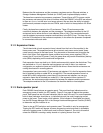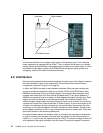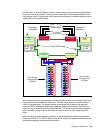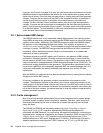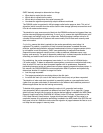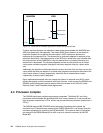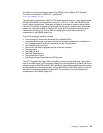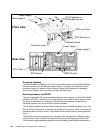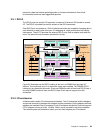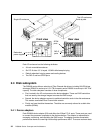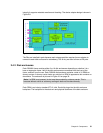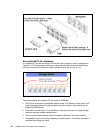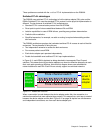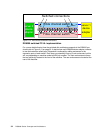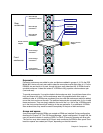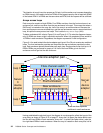
Chapter 2. Components 29
prevent any data loss without operating system or firmware involvement. Non-critical
environmental events are also logged and reported.
2.3.1 RIO-G
The RIO-G ports are used for I/O expansion to external I/O drawers. RIO stands for remote
I/O. The RIO-G is evolved from earlier versions of the RIO interconnect.
Each RIO-G port can operate at 1 GHz in bidirectional mode and is capable of passing data in
each direction on each cycle of the port. It is designed as a high performance self-healing
interconnect. The p5 570 provides two external RIO-G ports, and an adapter card adds two
more. Two ports on each processor complex form a loop.
Figure 2-6 DS8000 RIO-G port layout
Figure 2-6 illustrates how the RIO-G cabling is laid out in a DS8000 that has eight I/O
drawers. This would only occur if an expansion frame were installed. The DS8000 RIO-G
cabling will vary based on the model. A two-way DS8000 model will have one RIO-G loop. A
four-way DS8000 model will have two RIO-G loops. Each loop will support four disk
enclosures.
2.3.2 I/O enclosures
All base models contain I/O enclosures and adapters. The I/O enclosures hold the adapters
and provide connectivity between the adapters and the processors. Device adapters and host
adapters are installed in the I/O enclosure. Each I/O enclosure has 6 slots. Each slot supports
PCI-X adapters running at 64 bit, 133 Mhz. Slots 3 and 6 are used for the device adapters.
The remaining slots are available to install up to four host adapters per I/O enclosure.
Processor
Complex 0
RIO-G ports
Processor
Complex 1
RIO-G ports
I/O enclosure I/O enclosure
I/O enclosure I/O enclosure
I/O enclosure I/O enclosure
I/O enclosure I/O enclosure
Loop 0
Loop 1



